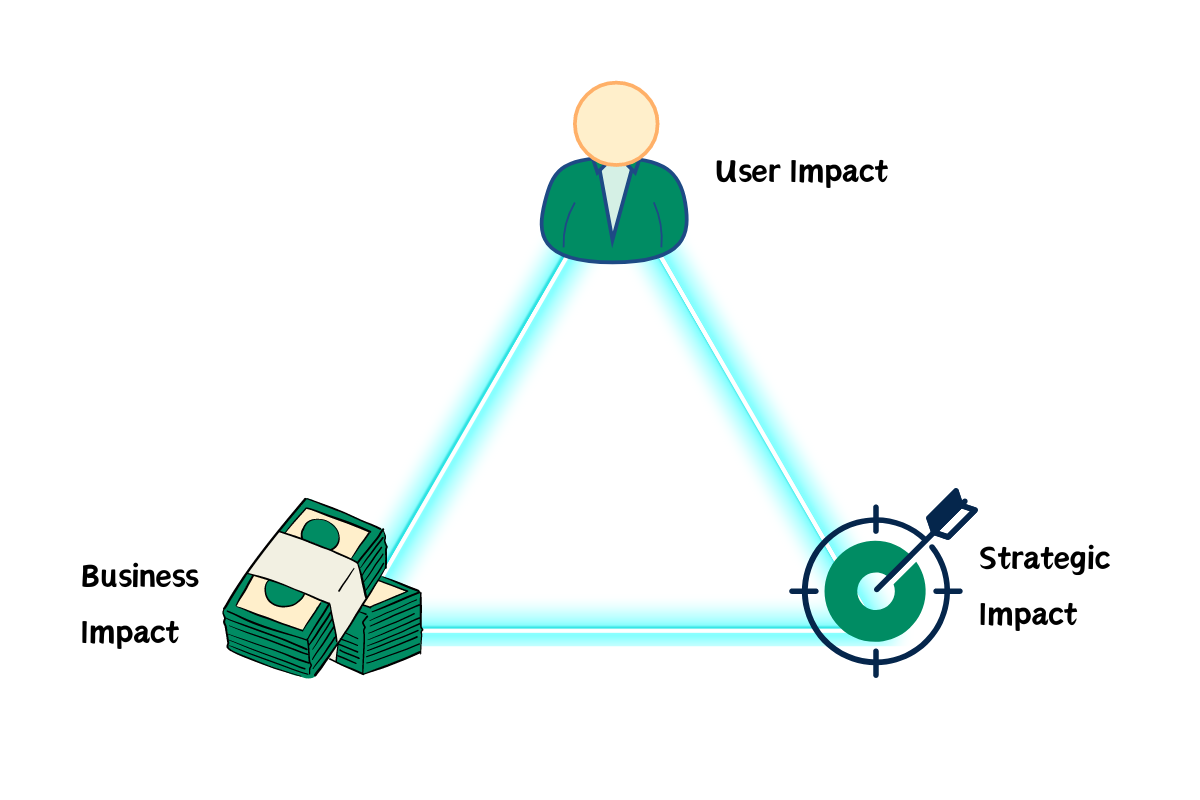How Should a PM Validate Feature Opportunities
 Features are the most common types of projects that early-career PMs contribute to, whether that means improving existing features or launching the new ones. As a PM, every day, we might find ourselves frequently encounter a seemingly endless Product Backlog, and are pressured by various stakeholders to prioritize their requests. However, with limited resources and only 24 hours in a day, it’s impossible to fulfill every request. We have to learn how to say “No” to the less-important ones.
Features are the most common types of projects that early-career PMs contribute to, whether that means improving existing features or launching the new ones. As a PM, every day, we might find ourselves frequently encounter a seemingly endless Product Backlog, and are pressured by various stakeholders to prioritize their requests. However, with limited resources and only 24 hours in a day, it’s impossible to fulfill every request. We have to learn how to say “No” to the less-important ones.
But, how do we determine which features are worth pursuing, and which ones are not?
In this post, I’m going to share what I’ve applied to validate and prioritize a feature requests, which I’ve learned from my experience as a PM and through Reforge.
The USB Framework
A feature that is worth pursuing should have a significant impact. However, when considering impact, early-career PMs often only focus on whether the feature will solve user problems. While addressing user needs is essential, it is only one aspect of the equation.
In reality, a successful opportunity should have three crucial elements, which I called “The USB Framework: User Impact, Strategic Impact, and Business Impact.”

User Impact
The first critical component of a valuable feature is User Impact. Typically, early-career PMs will primarily evaluate this aspect, because when a manager assigns them a project, it’s likely that they already have a strong hypothesis about strategic fit and business value.
“User Impact” refers to whether the feature provides value to users by solving a relevant problem for a specific group of users. If a project does not address a relevant problem, it will struggle to gain traction, and has a high chance to fail in near future.
For example, Google+ failed to attract users because it did not offer any unique features compared to existing social media platforms like Facebook and Twitter. Additionally, its complicated interface and privacy concerns further deterred users from adopting the platform. As a result, Google+ was shut down in 2019 due to its low user engagement and security vulnerabilities.
Strategic Impact
In addition to delivering user value, a successful opportunity should also align with the business strategy at all levels. This means that the feature should contribute to the goals of the company, product and team, which ultimately drives the company forward in a meaningful way. Otherwise, building a feature that may divert the company from its intended direction, as scattered actions and resources do not make for a good strategy, as Richard Rumelt discusses in his book “Good Strategy, Bad Strategy”.
A notable example of this is Apple in the early 1990s. Due to a lack of direction, their product lineup became fragmented, resulting in confusion among consumers and increased manufacturing costs. Coupled with declining sales and market share, Apple was close to bankruptcy at this time. Fortunately, after returning to the company, Steve Jobs streamlined operations and cut back to a core product line, ultimately reviving Apple’s success.
Business Impact
The third and final component of a successful feature opportunity is that it should create business values. Ultimately, we should solve a relevant user problem in a way that also captures some form of value for the business. Business value is not always measured in monetary terms, it could be employee value, customer value, societal value, etc. - anything that can determine the health and well-being of the firm in the long run.
However, based on my own experience, in the scope of validating a feature request, the business value often takes the form of Acquisition, Retention, and Monetization. Thus, when considering a feature request’s potential business impact, I assess whether it can contribute to acquiring new customers, retaining existing customers, and/or generating more revenue for the company.
For example, a project that streamlines the payment process could improve sales conversion rates and increase revenue. Another project could enhance the user experience and improve ratings, leading to more downloads.
Final Thought
While the concepts of user value and business value may seem straightforward, there may be situations where your company prioritizes certain Enterprise’s Requests in order to maintain a steady flow of revenue, even if they do not align with the overall company strategy. However, I believe what falters is not the framework itself, but rather the coherence of the company’s strategy. According to Richard Rumelt, one of the most famous strategists, a good strategy should be cohesive, coordinating actions, policies, and resources to achieve a significant goal. Therefore, prioritizing actions that do not align with the company’s strategy is a clear indication of a bad strategy. In this situation, it can be concluded that this company either has a weak strategy or has made modifications to adapt to the current circumstances.
By the way, I also believe that the USB Framework might not be a one-fit-all answer. Different PMs could have different perspective and methods to evaluate a feature opportunity. Just take what resonates with you, and feel free to share with me your validation frameworks, I would love to hear you more!